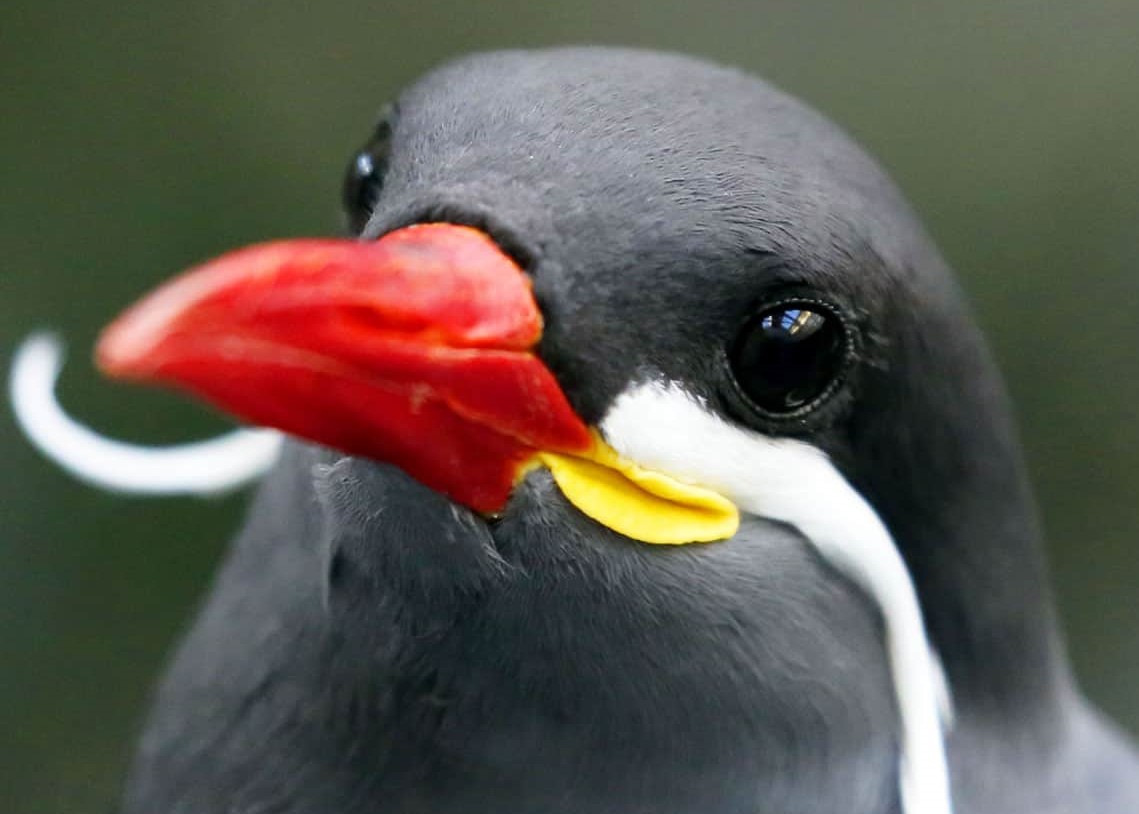The Ateri, cute creatures of the forests
Anatomy
Ateri are small mammals similar to racoons or little bears. They have a round head with bear like ears, big eyes and an small nose and mouth. Their bodies are small and they have 4 limbs, that although small to the ones that look at it, are incredibly powerful as they allows them to quickly climb trees. Their claws, small but very resistant greatly improve this climbing capability. Some species of Ateri had some raccoon type of tail while others have tails similar to bears. The ones who have long raccoon type tails use it to hung from the tree branches to catch fruits, which are the base of their diet, while the ones that don't have tails, come down from the trees and eat the fruits that feel from the trees or berries.
Usually Ateri display black and white spots that create different patterns alongside the body, but curiously, every Ateri has different patterns that allow them to differentiate between individuals. Each pattern is unique to that specific Ateri. It is said that the cubs of an Ateri couple display a pattern which is a combination between the colour pattern of the father and that of the mother, but still each sibling has a different pattern of spots.
Perception and Senses
Ateri have big eyes, they can see in the dark very well, but these big, usually black eyes, allows them to spot fruit in neighbouring trees. Their sense of hearing is also good which is very important since they are social animals that communicate between them doing acute sounds. Their sense of smell seems to be pretty average, allowing them to smell fruits around them.
Diet
Ateri are herbivores, their main diet consists of fruits like apples, pears, pomegranates. but their favourites without any doubt are peaches. Depending on the race of the Ateri they also eat berries, especially blackberries and raspberries. Ateri might also eat nuts, especially walnuts and hazelnuts. In the case of walnuts, they have even learned how to crack the shell, usually with a swift but powerful stroke against a tree trunk or stone.
Ecology and Habitat
Ateri are indigenous to the Southernmost regions of the continent of Teria. They live in the dense forest and jungles that offer plenty of food during the year, as well as a secure refuge against predators. In this area they share the space with many other animals like birds (tucans, kakapos, eagles, parakeets), lizards, elephants and dragon birds, the latter are their main predator, usually ambushing them while they are on the ground, jumping on them and finishing them swiftly with their big claw or their teeth. Although some had seen eagles hunting Ateri that were on the ground or in a branch and that they were too unfortunate to not see the danger coming.
Ateri, because of their size tend to live or better say take cover in the holes of tree trunks, where they can avoid predators and the and inclement weather, especially during the rainy season. They take care of their cubs there and also share this space with their partners.
Behaviour
Ateri are extremely social creatures, not only with other Ateri, but also with other creatures once they convince themselves that they mean no harm, such as humans, elves, elephants. For example, it has been reported that they shared part of the fruits of a tree with a couple of elephants, and in the presence of a human or an elf, if you give them fruit, they could sit at your side and let you pet them, carefully though.
They have life partners and usually take care of one another, as well as their cubs. They tend to live in small groups of 5 or 6 Ateri. They communicate with one another doing acute sounds similar to similar to squirrels, rabbits or beavers. Some experts say that they differentiate up to 40 types of Atteri sounds, each one of them meaning something different such as friend, relative, food, incoming danger, mating calls etc... .
Growth Stages and biological cycle
When they are born, Ateri are about the size of a mouse, usually one of the parents take care of them inside the tree whole while the other goes outside searching for food. When they reach 5 months, they began to leave the tree whole in the company of their parents, who teach the young cubs how to collect food, and how to climb fast in order to avoid predators. From this time onwards their size increase until they reach maturity once they are 2 years old, at this time, they are as big as a rabbit. After they reach adulthood they might search for a partner, in order to do that, each summer, during the mating season, both males and females descend from the trees and began calling their possible suitors. Once male and female are together, both begin to make sounds that reminiscent of a song and began shaking their tales in different ways (if they have them) or their bellies. If both suitors are attracted to each other after this "dance" mating begins.
Usually an Ateri female can give birth to 3 or 4 cubs each time. Because they live their first months secure in the tree wholes, mortality ratio among Ateri cubs is not high, it increases from the moment they begin to go outside the tree holes with their parents.
Ateri have a lifespan of about 15 to 20 years during which they can have multiple litters. Once an Ateri reaches adulthood and find their lifetime partner, they built their homes near their parents but not on the same tree, that is because as I said, Ateri might have multiple litters over the course of their lives, so the trees will get a bit crowded if everyone was living there.
Some naturalists who showed interest in these little cute creatures from the forests of Southern Teria, also noticed a pattern among Ateri. Each year, in summer families seem to gather around one of the bigger trees, they climb to a safe position in one of the stronger branches of the tree and they sit there together sharing a little meal with the fruits they found, quite an advanced an intelligent behaviour for such small creatures. These naturalists have called this curious phenomenon, the Ateri summer festival.
Discovery
Ateri were known by the Elves who colonized Southern Teria during the middle and Late Bronze Age. In fact, Ateri is an elven name, meaning "cute". For humans, these creatures remained unknown until the campaigns of Boros the Conqueror in the 6th century AP. When the Oronai armies of Steplia reached the Southern Elven territories, and, when they crossed the forests and jungles of the region, the Oronai discovered these creatures, and became fascinated by their cuteness, intelligence and curiosity.
In fact some Royal Pages (the young sons of Oronai nobility that become personal servants of the King) that travelled with the army during the campaign the ones who first discovered these creatures while they were resting near a tree. It is said that two ateri appeared and the kids offered them pieces of bread and some pieces of apples, and that, somehow, these animals allowed them to pet them and were very curious about their hair, their bags... . Word of the discovery of these creatures reach King Boros who also had the chance to who also had the opportunity to interact with these little animals.
The Oronai first called them "Dendrousi", meaning Tree bears, but quickly, due to their contact with the elves from the South, they ended up adopting the elven name for this creatures, Ateri. Usually humans and elves don't hunt these animals, because they are harmless and cute, many would like to have one as a pet, but there has been no real attempt to domesticate them. Additionally, many of the Ateri that have been captured and brought to the city to try to domesticate them have died. Many attribute it to the stress caused by the hustle and bustle of the city and the noise, since these animals are used to the quieter environment of the forest and jungle.
There is a tradition though that says than an Ateri's tail brings gook luck so, if you came across a death one, who has been eaten by usually an eagle or a dragon bird, cut the tail and bring it home and it would bring you luck for the rest of the year. Elves said it doesn't work if you hunt them for that purpose.








Awww, they're so cute and they have a little summer festival, awwwwww. <3 Great article. I love the detail about the pages meeting the ateri.
Explore Etrea